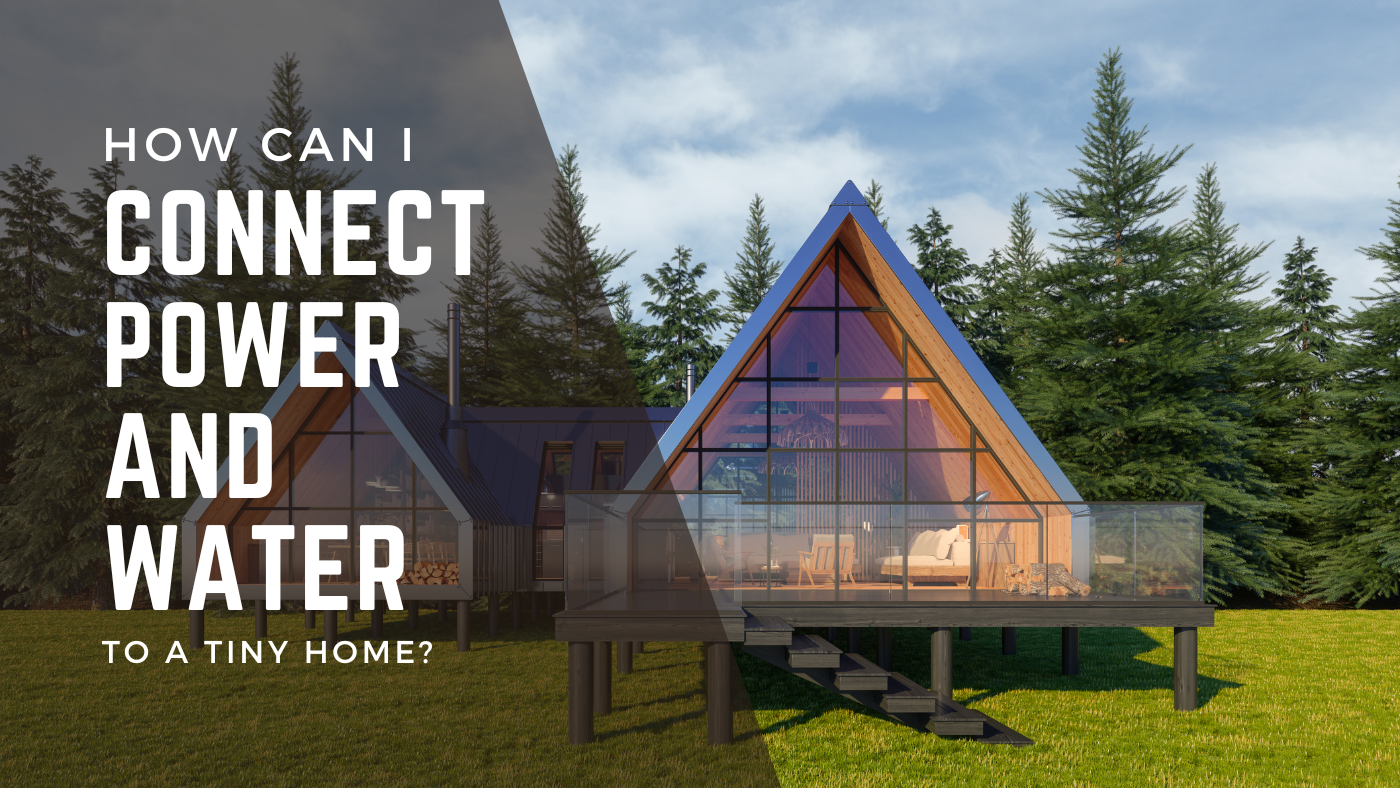
Tiny homes, once a niche architectural trend, have exploded in popularity over recent years. These compact structures provide a host of benefits, including lower living costs, reduced carbon footprint, and a move towards minimalism. Their size and often remote locations raise essential questions regarding utilities: How do we power and supply water to these homes?
In this guide, we’ll explore both traditional and innovative methods to connect your tiny home to power and water, ensuring you’re equipped with the knowledge to make an informed decision.
Traditional Utility Connections for Tiny Homes
Powering Your Tiny Home
When located near an existing structure or within a designated community, connecting a tiny house to traditional utilities can be easy.
- Direct Connection: Think of it as an extension of your primary residence. By using strong, weather-resistant extension cords, you can draw power directly from your main structure, provided it’s within a safe distance.
- Safety First: Never underestimate the power of electricity. Overloading circuits or using inadequately rated extension cords can lead to fires or other safety hazards.
- Consultation is Key: Hiring a professional electrician to guide you through this process is invaluable. They can gauge your power needs, ensuring you’re connected safely and efficiently.
Water Supply
The joy of having running water in any home can’t be understated. For tiny homes located near a primary structure:
- Hose Connection: For basic water needs, a high-quality garden hose might suffice. Always ensure the hose is suitable for drinking water.
- Permanent Plumbing: For those looking for a long-term solution, or those with greater water demands, connecting to an existing plumbing system might be the way forward. Тhis method can be more complex, involving trenching and potential regulatory hurdles.
The Allure of Off-grid Living
Powering With Solar Energy
Solar energy is arguably the most popular off-grid power source for tiny homes.
- Why Solar? In addition to the environmental benefits, solar energy ensures freedom from monthly electricity bills and unpredictable price spikes.
- Flexibility and Positioning: Tiny homes offer unparalleled flexibility. If your home is mobile, you can move it into shaded areas during hot days, placing the solar panels in sunnier spots to maximize power generation.
- Thе Components: Each solar setup comprises panels, storage batteries, and inverters. While panels capture sunlight, batteries store this energy, with inverters converting it into usable power.
- Maximizing Solar Utility: Orientation, panel quality, and seasonal considerations can drastically influence your energy harvest. Also, remember that batteries, though long-lasting, will eventually require replacements.
Rainwater Collection Systems
Water is a vital resource, and when you’re off-grid, sourcing it sustainably is key.
- Efficient Collection: Having efficient gutters and downspouts is crucial. The more effectively you can channel rainwater into your storage tanks, the greater your water reserve.
- Quality Matters: Not all water tanks are created equal. Investing in a high-quality tank ensures longevity and reduces the risk of water contamination.
- Beyond Rain: In areas of scarce rainfall, you might have to rely on alternative water sources or incorporate large storage capacities to tide over dry spells.
Hybrid Systems: Best of Both Worlds
Sometimes, drawing from both traditional and off-grid systems offers a practical solution.
Dual Power Systems
- Backup Systems: By having both solar panels and a direct connection to the grid, you ensure that even on cloudy days, your power needs are met.
- Financial Benefits: Some locales might offer incentives or buyback programs for solar producers, effectively allowing you to earn from your excess energy production.
Integrated Water Solutions
- Water Redundancy: Being connected to both a local water source and having rainwater collection ensures that even if one source fails, you have a backup.
Innovations and Efficiency
Greywater Recycling
- What is Greywater? This is water that’s been used in sinks, showers, or washing machines. Instead of letting it go to waste, systems can redirect it for uses like toilet flushing or irrigation.
- Eco-Friendly and Efficient: Greywater systems significantly reduce water waste. In tiny homes, where resource efficiency is paramount, they’re a perfect fit.
Cutting-edge Tiny Home Tech
- Efficient Appliances: The market today is brimming with energy and water-efficient appliances specifically designed for tiny homes. From low-power fridges to water-saving showerheads, these innovations ensure you get the most out of your utilities.
Overcoming Challenges
Consistent Maintenance
- Scheduled Checkups: Regular maintenance, from cleaning solar panels to inspecting plumbing, can extend the life of your systems and preempt potential issues.
Understanding and Adhering to Regulations
- Legal Challenges: Zoning laws, building codes, and utility rules can vary by region. Familiarizing oneself with these and seeking necessary permissions can save future hassles.
Conclusion
Tiny homes, while presenting unique challenges, offer a world of possibilities. Whether you’re tapping into the grid or harnessing nature’s resources, ensuring your tiny home is powered and hydrated is entirely feasible with a bit of planning and innovation. As this movement continues to grow, so too will the methods and technologies that support it. Remember, while the homes might be tiny, the potential for sustainable, efficient living is enormous.
